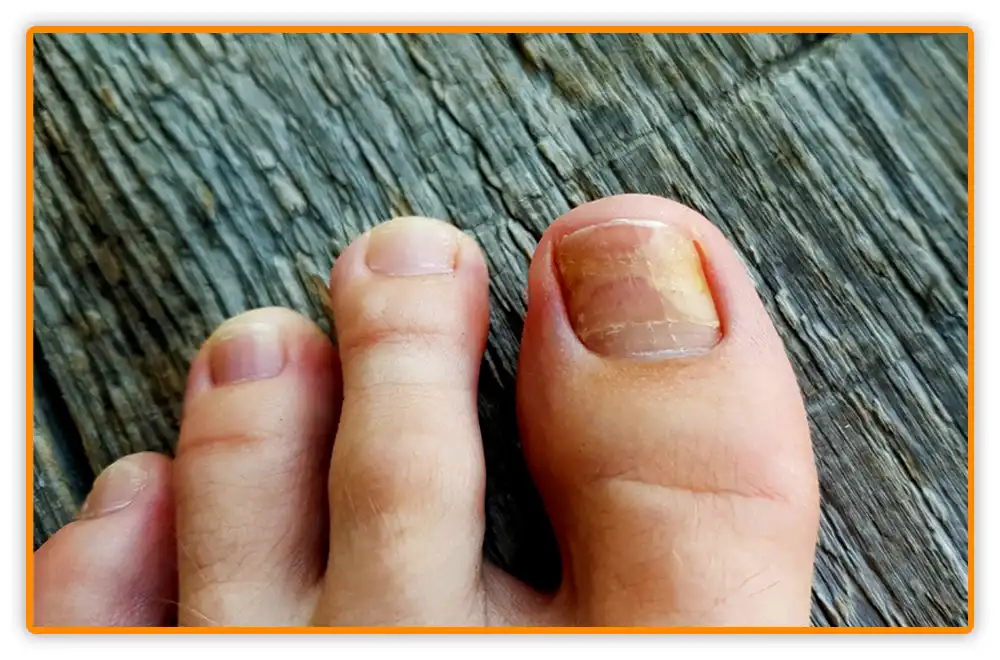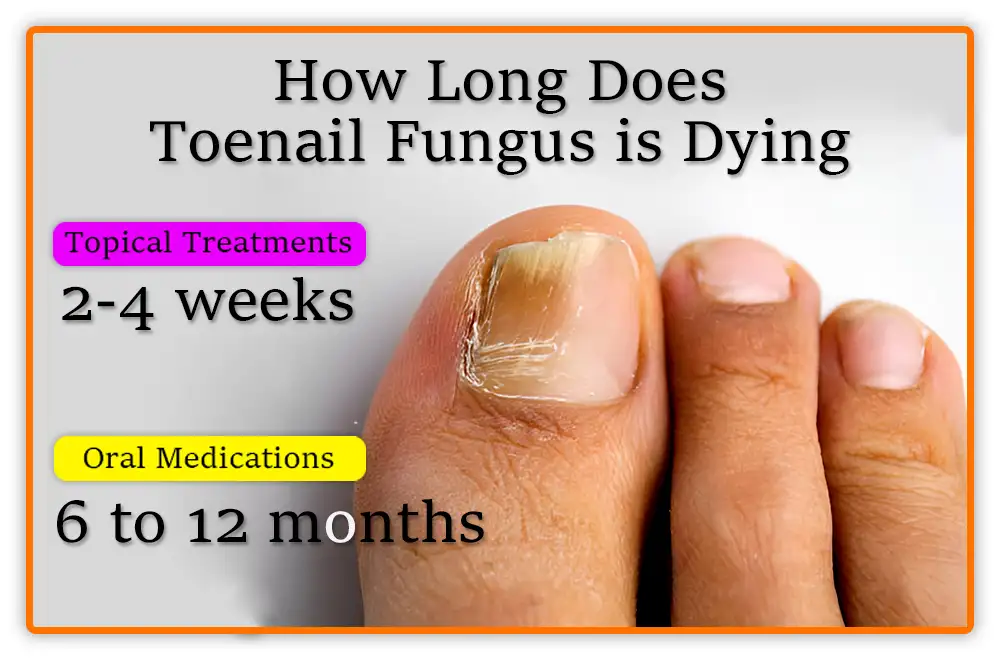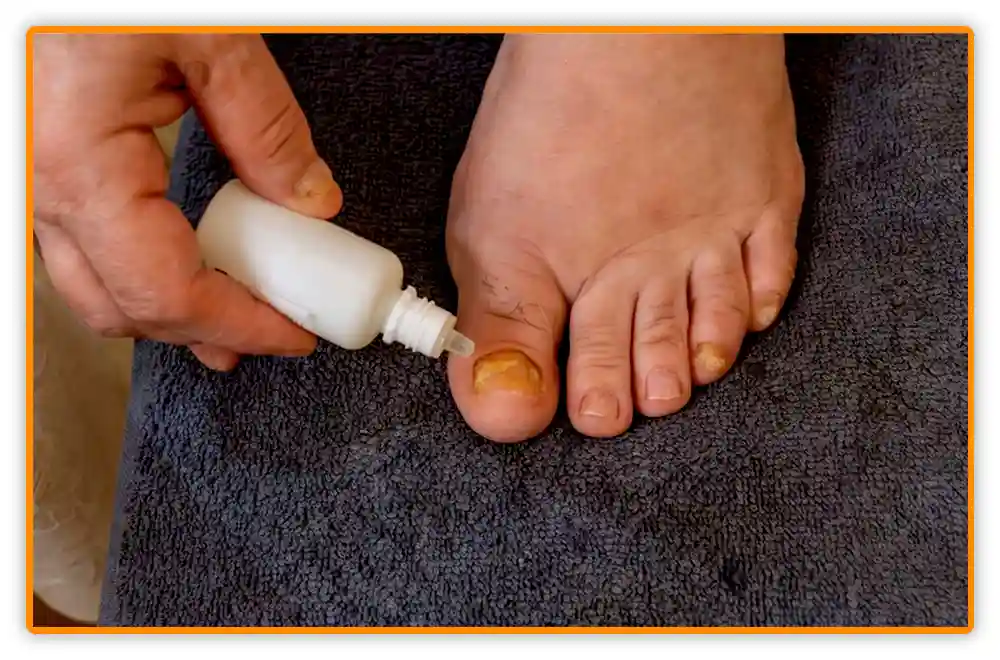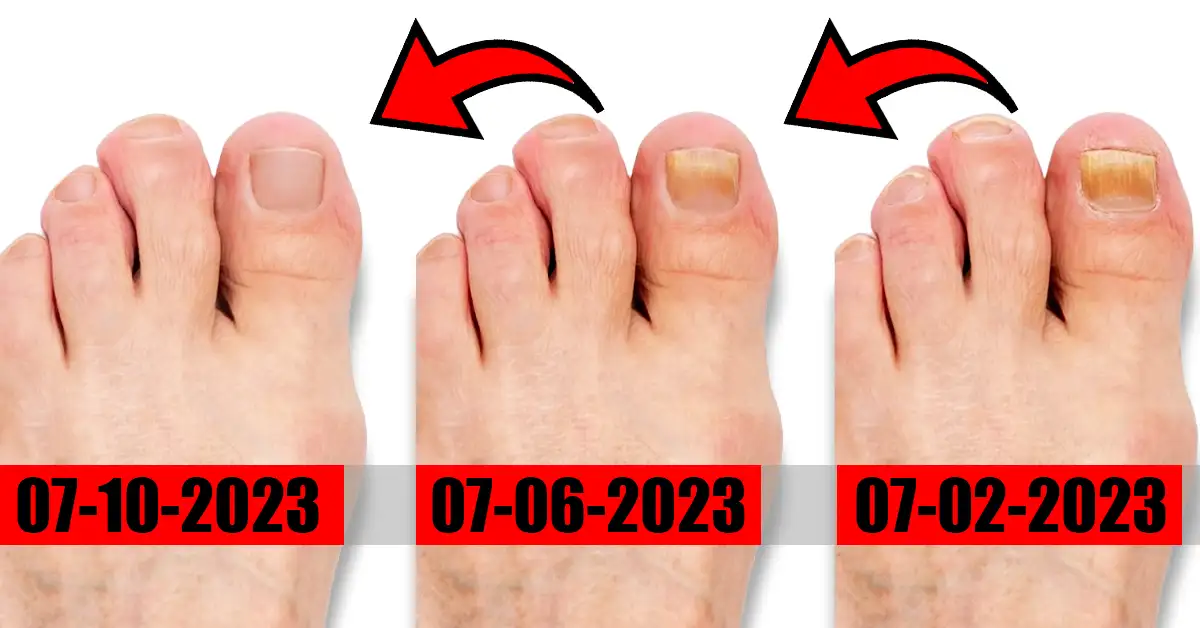Are you watching for signs that your toenail fungus is finally going away? If you’ve started treatment and are eager to see progress, you’re in the right place. In this article, I’ll share my personal experience and explain how to know if toenail fungus is dying.
I’ve dealt with toenail fungus twice, so I understand the journey. I’ll point out clear signs like less discoloration, smoother nails, and new, healthy nail growth. These signs are easy to spot and show that your treatment is working well.
Table of Contents
Early Signs: How to Know If Toenail Fungus is Dying
Spot early changes in your toenail fungus, such as clearer nails and less pain. Always follow your treatment plan.

Color Changes
What does a toenail look like when the fungus is dying? From my own experience, one early sign of progress is a change in the color of your nail. When I started treating my toenail fungus, I noticed the infected nail shifting from a darker color, like yellow, brown, or black, back to its natural, lighter tone. This change made me feel hopeful that the treatment was working.
“A study found that fungi are often behind nail color changes and deformities ( Akpinar Kara, 2020 ).”
For topical treatments like creams or ointments, you might see the nail color start to lighten in a few weeks. For oral medicines, which are used for worse cases, it can take months to see big changes in color. During my treatment, I took Terbinafine (Lamisil) as my doctor suggested. It wasn’t until a new nail started growing in about 2.5 to 3 months later that I noticed a significant improvement. It’s important to keep using the treatment as your doctor says to get fully better.
Decrease in Nail Thickness
When toenail fungus starts dying, you might notice your toenails becoming thinner. I remember seeing this change during my treatment, and it made me feel hopeful. The thinning can be slow and gradual, but it’s a clear sign that the fungus is being reduced. It took some time, but seeing the progress was reassuring.
Full recovery requires a completely new nail to grow, so patience is key. In my case, it took a few months, but the wait was worth it for healthy nails.
Relief from Discomfort or Pain
How do you know if toenail fungus is dying? Feeling less discomfort or pain can be a promising sign. When I was treating my toenail fungus, the pain started to fade, and I felt more at ease. However, this improvement alone should not be taken as the only sign of recovery.
A more reliable sign is the growth of a healthy, new nail at the base of your toe. Seeing this new growth showed me that the nail was truly healing from the infection. Patience and consistent treatment were key to seeing these positive changes.
Healthy Nail Growth
How do you know if toenail fungus is dying? Seeing healthy nail growth is a clear answer. This new growth should look clear and feel smooth, unlike the infected nail. It starts at the nail bed and slowly replaces the old, infected nail as it grows out.
When I was dealing with toenail fungus, watching the new, healthy nail come in was a relief. It took time, but each bit of new growth made me feel hopeful. Patience is important in this process. Keep following your doctor’s advice to ensure the entire nail heals properly and the fungus doesn’t come back.
How Long Does Toenail Fungus is Dying

The treatment times can vary, but you’ll usually see improvement in a few weeks. For me, it was reassuring to see small changes early on. However, the complete eradication and regrowth of a healthy nail can take from 6 to 18 months. This timeline depends on how severe the infection is and how well the treatment works. During my treatment, I learned to be patient and consistent, as the process takes time. Here’s a general timeline:
- Topical Treatments: For lighter infections, treatments like antifungal creams, ointments, or lacquers may show results in 2-4 weeks. However, fully healing and growing a new, healthy nail can take several months. When I used a cream ( Ciclopirox ), I saw some changes, but I knew it would take time to fully heal.
- Oral Medications: These are typically for tougher cases and might start improving symptoms within weeks. Full recovery and nail regrowth, though, can take from 6 to 12 months, sometimes longer. I took oral medication for my infection, and while I noticed improvements, it took about a year for my nail to fully regrow.
- Home Remedies: The success of home treatments for toenail fungus varies. While some may notice improvements within months, there’s no guarantee these results will be consistent or permanent. I tried baking soda, garlic, and coconut oil before seeing my doctor. These helped a bit, but the results were mixed. It wasn’t until I started a prescribed treatment that I saw real progress.
Related Post: 7 Easy Home Remedies For Toenail Fungus
Effective Treatments for Toenail Fungus
Learn about the best treatments for toenail fungus, from over-the-counter options to prescription medications and natural remedies.

Over-the-Counter Products For Toenail Fungus
Doctors typically recommend sticking to over-the-counter (OTC) treatments when the fungus affects less than half of the nail and hasn’t reached the base of the nail. Many people start with OTC options like antifungal polishes, creams, and ointments. These products are easy to access and simple to use, making them a popular first step for mild fungal infections. They work well for mild cases, but their effectiveness can vary and they are often less effective for severe infections. OTC products are easy to use and convenient, but they might not work as well as prescription treatments.
Prescription Treatment For Toenail Fungus
For hard-to-treat toenail fungus, doctors may suggest stronger medicines. These include pills like terbinafine and itraconazole that fight the fungus. They work well but need careful watching because they can have side effects. Doctors also might use special nail polishes like efinaconazole or ciclopirox for milder cases. These are applied right on the nail and must be used regularly for a long time to see results. It’s important to follow the doctor’s advice closely when using these treatments.
Home Remedies and Natural Treatments For Toenail Fungus
Many people turn to home remedies and natural treatments to manage toenail fungus. These methods are popular because they can be done at home and are often less costly. Common choices include tea tree oil and vinegar soaks. Tea tree oil fights fungus, while vinegar soaks may slow its growth. Home treatments like these might work differently for everyone and often lack strong scientific support. However, they are safe to use and might help with mild fungus issues. When using these treatments, patience is key, as improvements can take time to become noticeable.
Related Post: What is the Most Effective Treatment for Toenail Fungus?
Monitoring Treatment Progress
Discover how to tell if your toenail fungus treatment is working. This simple guide will show you how to track recovery signs and understand the progress of your treatment.
Regular Checks: Regularly checking your toenail’s condition is crucial. Watch for changes like decreased thickness and improved nail color, which indicate your toenail fungus is dying. I made it a habit to check my toenail every week.
Documenting Changes: Keeping a note of changes in your toenail can really help, especially when you talk to your doctor. Here’s what helped me:
- Date: Write down the date every time you check your nail.
- How it looks: Note any changes in color or thickness, and if there’s new, healthy nail growing. Seeing these changes kept me motivated.
- Pictures: Taking pictures every week can show how your nail changes over time, which is very useful for your doctor. I found comparing photos from week to week very encouraging.
Continuing Treatment: Even if your nail starts to look better, keep using your treatment until the end date your doctor gave you. If you stop too soon, the fungus might come back. I learned this the hard way when I stopped treatment early once and the fungus returned. Make sure to finish all the medicine to really kill all the fungus.
By watching your nail closely and sticking to your treatment, you can beat toenail fungus and get your nail healthy again. Always talk to your doctor if something seems off or if the nail isn’t getting better like it should. This approach helped me stay on track and finally see my toenail return to normal.
When to See a Doctor About Toenail Fungus
If you’re treating toenail fungus, it’s crucial to know when to seek advice from a healthcare provider. Here’s what to watch for:
- No Changes: If your toenail doesn’t start to look healthier after following your treatment plan properly, you should talk to your doctor. They might suggest a new treatment.
- Getting Worse: If the fungus spreads or your toenail looks worse, see your doctor. This means you might need a different treatment.
- Bad Reactions: Some treatments can cause side effects. If you have a bad reaction like a rash or stomach upset, stop the treatment and tell your doctor.
- Changing Treatments: Sometimes, you might need to change how you treat your toenail fungus. Your doctor can decide if you should try something new.
Always talk to your doctor about how your treatment is going. They can help make sure you’re on the right track to getting better.
Conclusion
Understanding what does toenail fungus look like when it’s dying helps you recognize the effectiveness of your treatment. Key indicators include lighter nail color and the growth of new, healthy nails. Always stick to your treatment plan fully to heal your toenail. Patience is essential, as full recovery can take time.
Still unsure how to tell if toenail fungus is dying? Consult your healthcare provider for personalized advice to make sure you’re on the right track to recovery. Need more help? Contact our med expert at info@homelysolve.com.
FAQ
What does toenail fungus look like when it’s dying?
When toenail fungus is dying, the nail clears up. It changes from dark yellow or brown to its natural color. The nail also becomes thinner and smoother, showing that the treatment is working well.
What happens if you don’t cure toenail fungus?
If you don’t treat toenail fungus, the nail can thicken, become brittle, and may spread. This can cause pain and affect other nails. It’s important to treat it early to avoid these issues.

